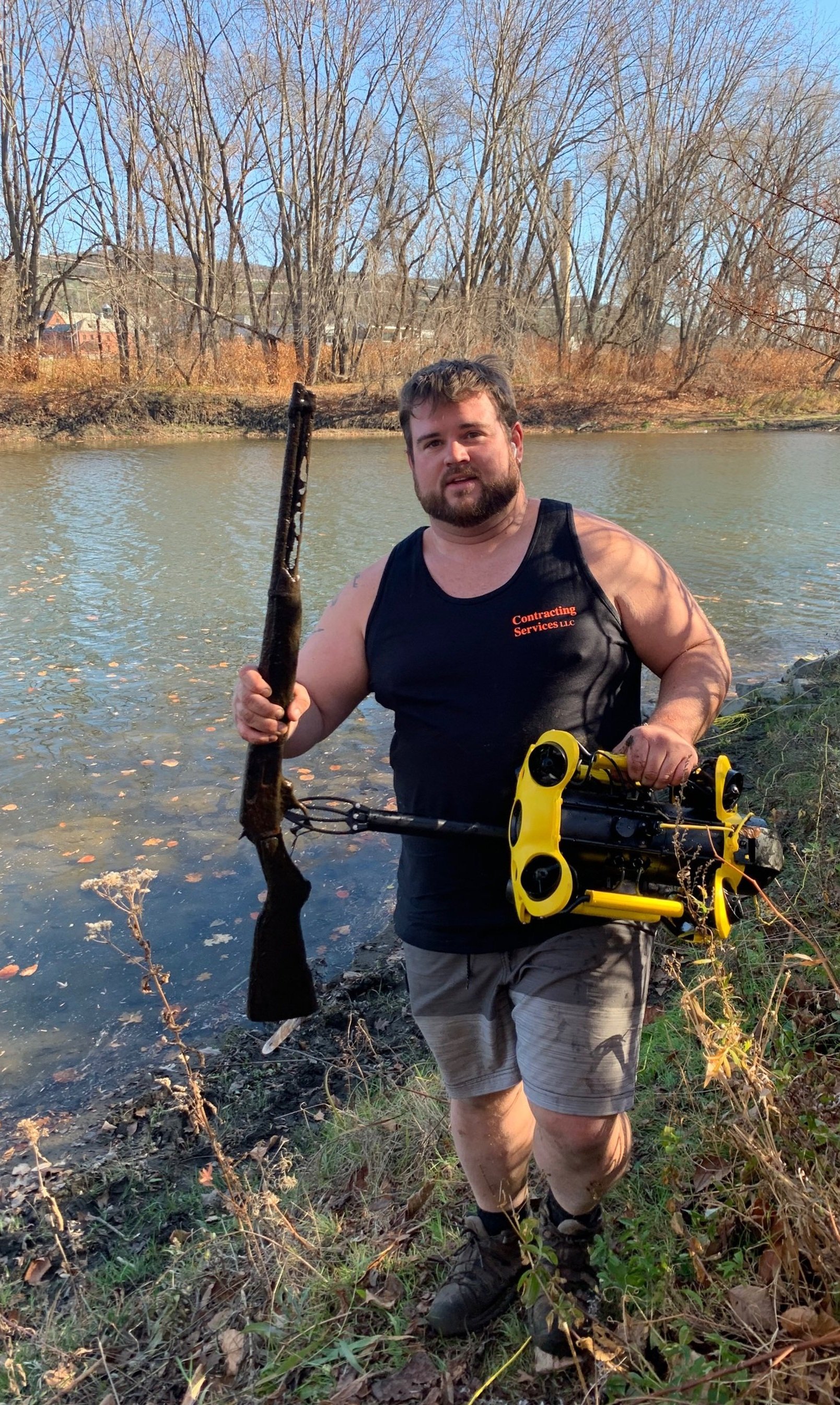Investigators examine items found in Messier disappearance case
Nov. 13, 2022 | By Lisa Scagliotti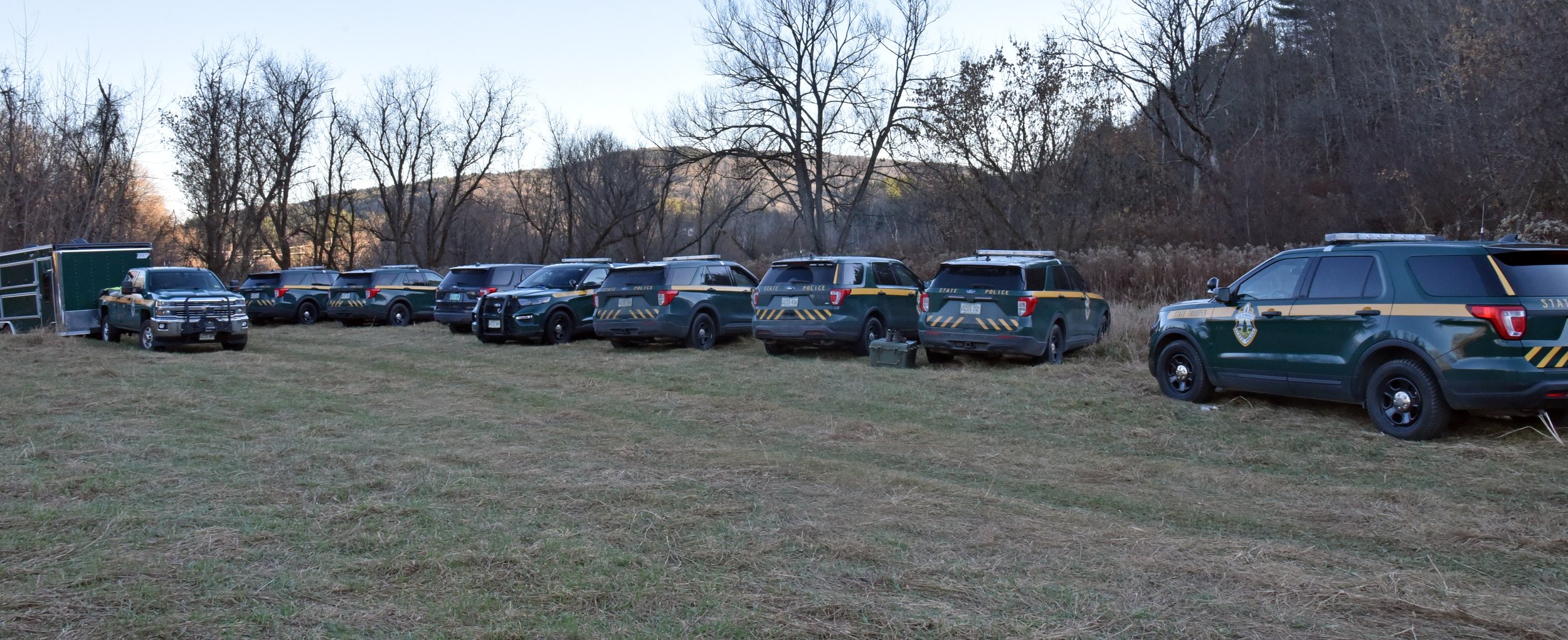
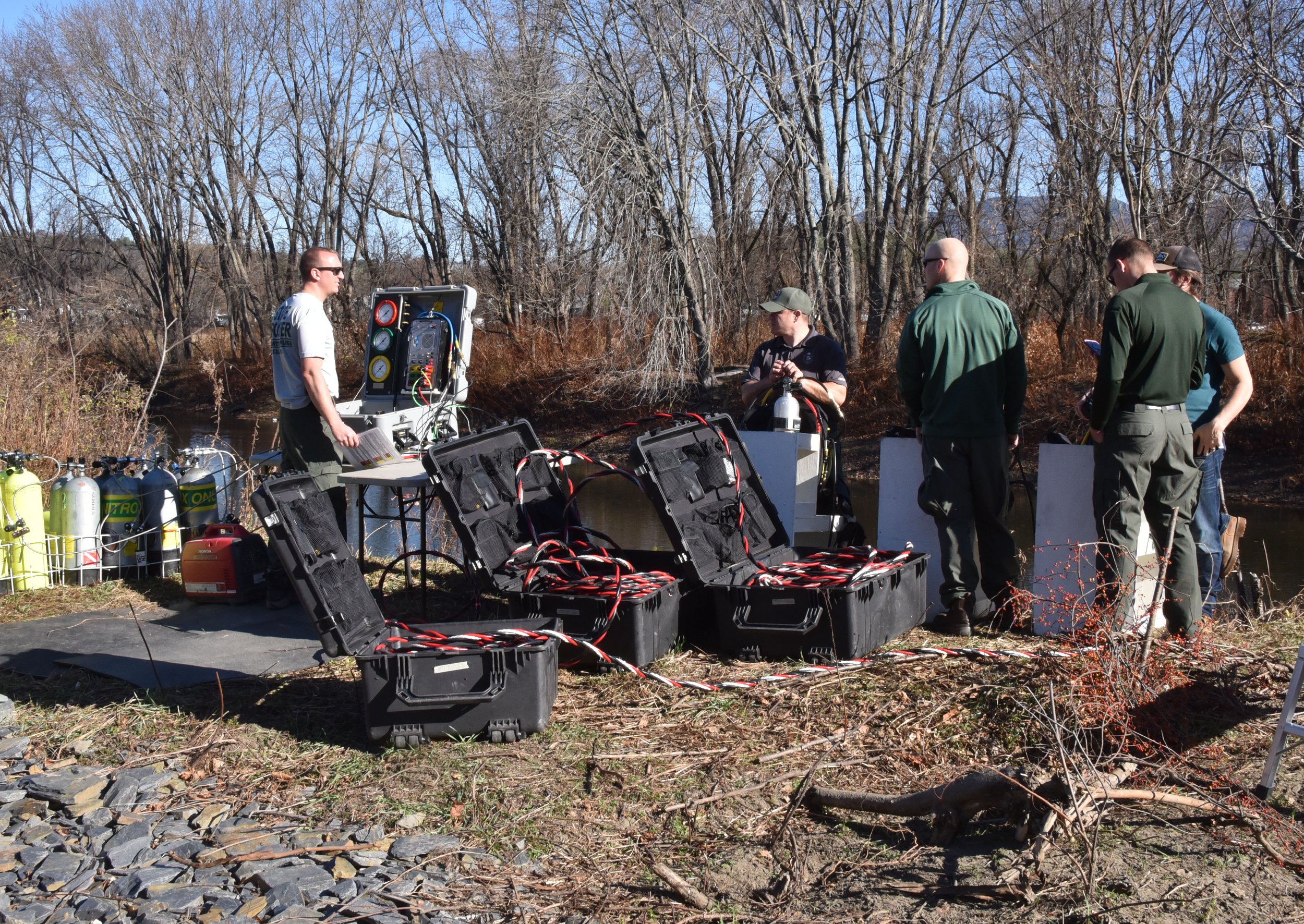
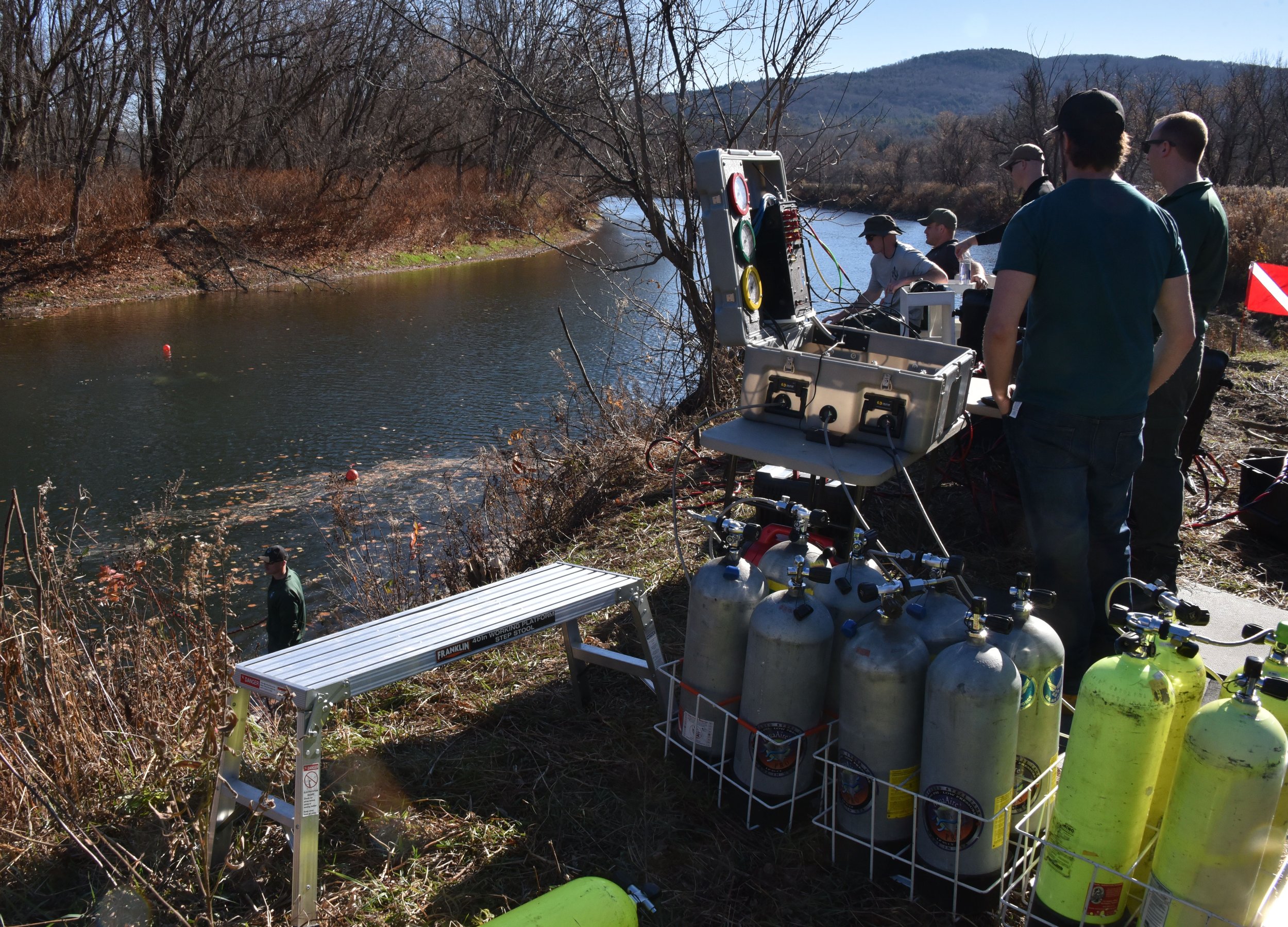
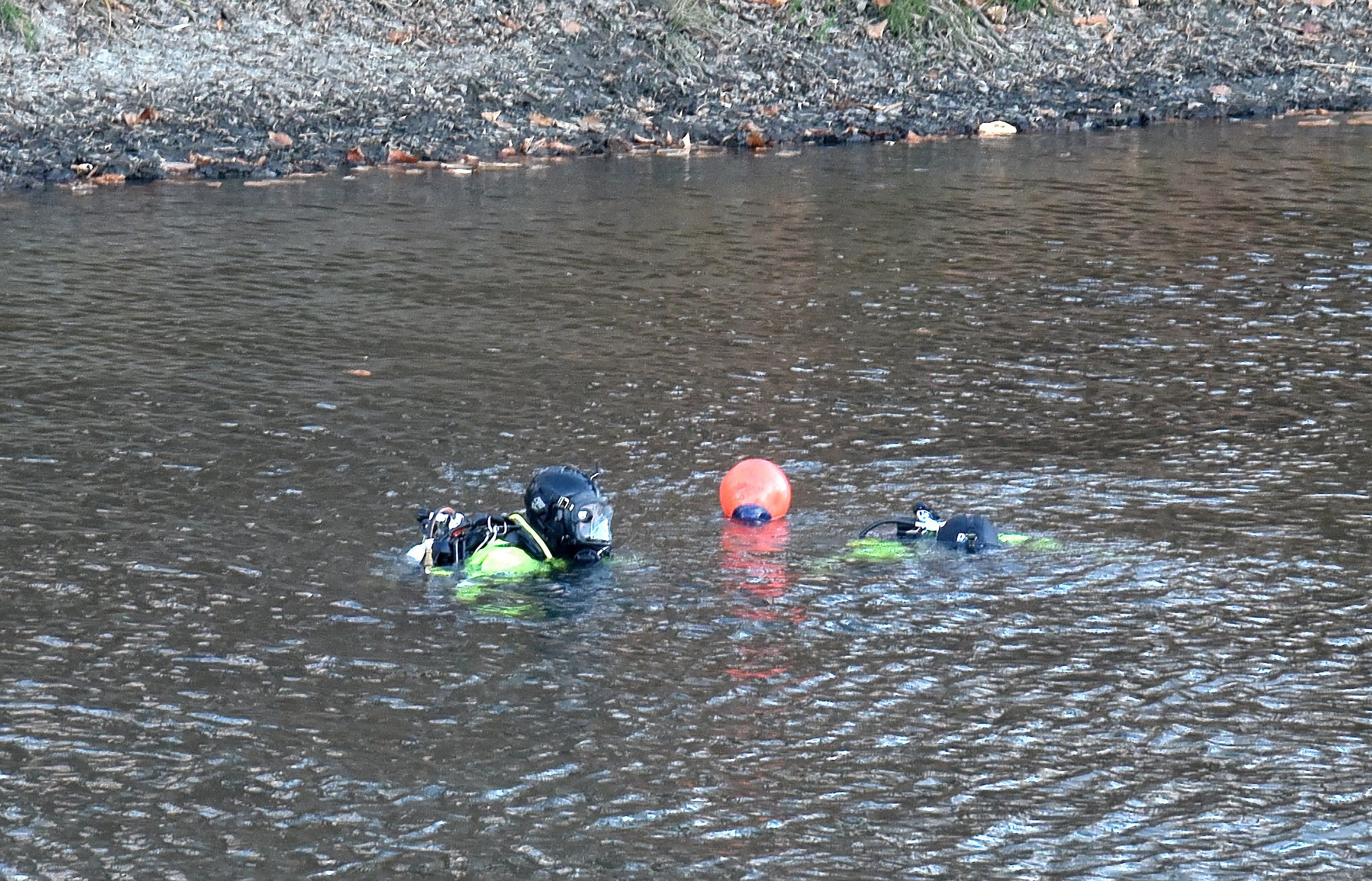
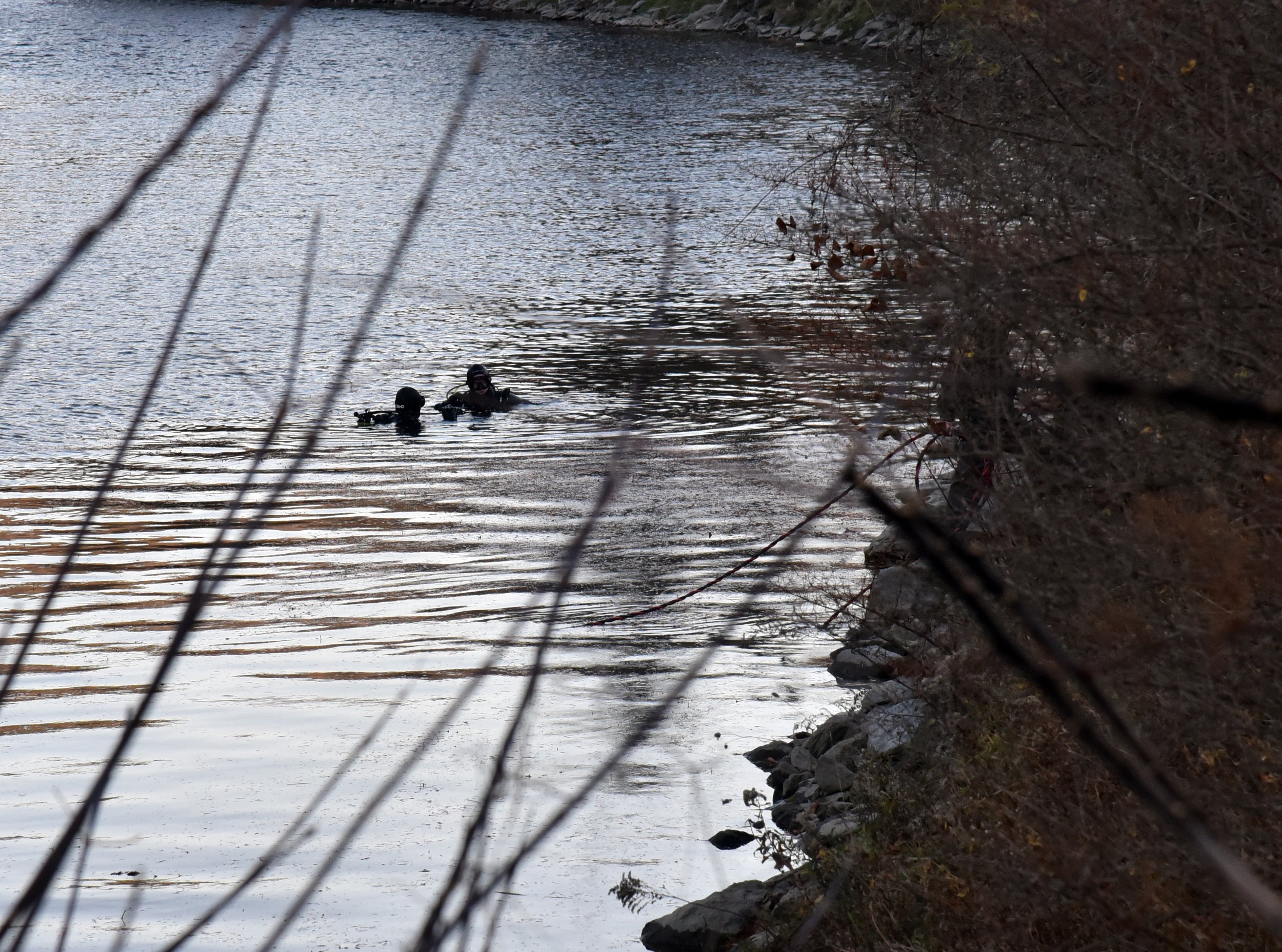
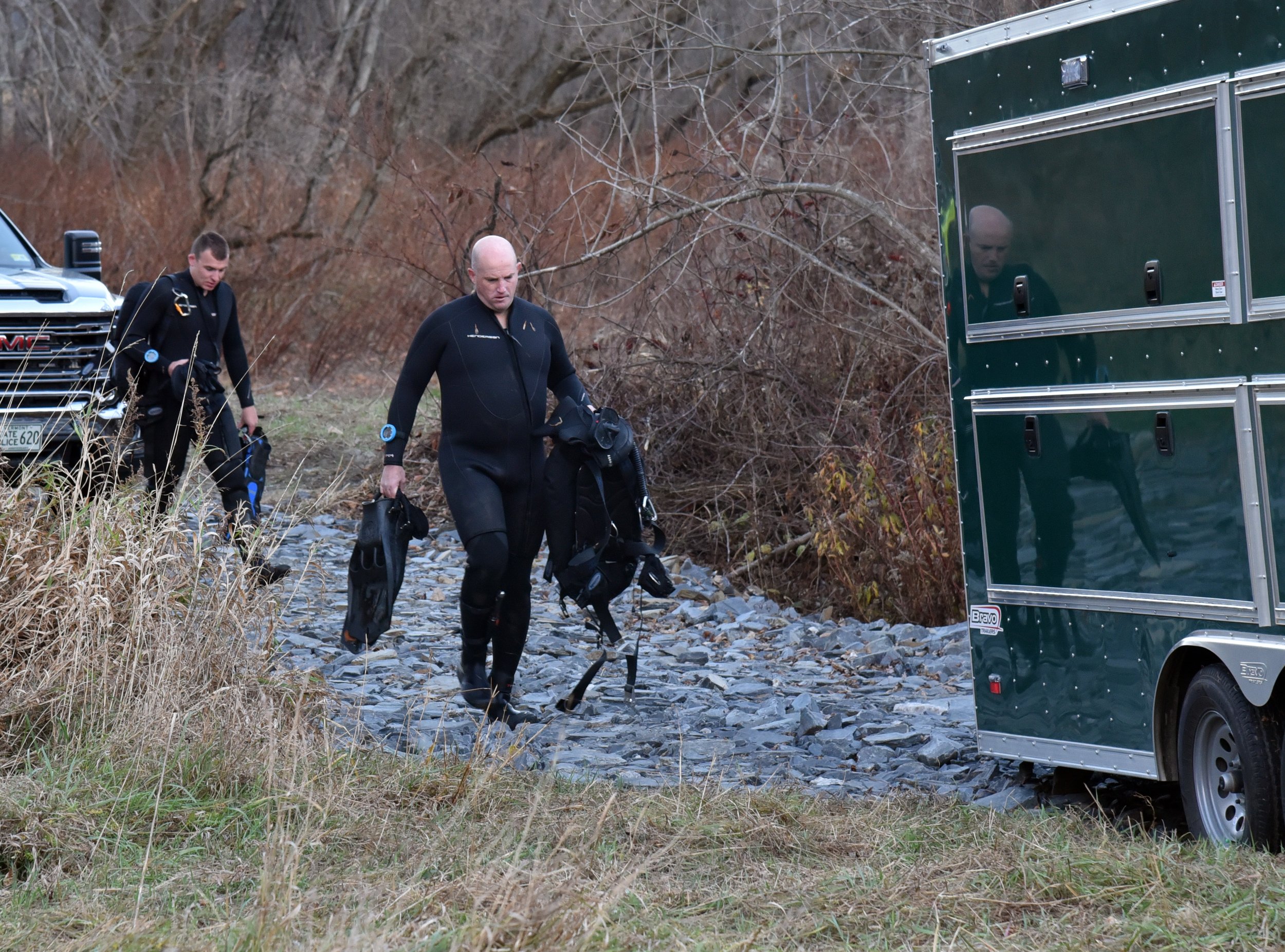
A month after the pickup truck belonging to Donald Messier was pulled from the Winooski River in Duxbury, investigators continue to pore over newly found objects in the river that may provide clues in the 2006 missing person case.
Vermont State Police divers and several volunteers returned to the river recently to continue looking for items that could have come from the bright red Ford F-150 pickup truck recovered from the river on Oct. 6.
“There were several items located from the river. We’re in the process trying to do our due diligence to figure out if they are indeed associated with Mr. Messier, or if they just happen to be items in the river,” said Vermont State Police Lt. John MacCallum late last week.
The activity comes after volunteer searchers worked along the river for several days the first week of November and retrieved a number of items including clothing, music CDs, and pieces of bones that they turned over to state police investigators.
Efforts last week added a rifle and other undisclosed objects to the pieces now being evaluated by detectives and the state medical examiner.
“Questionable items were found that need to be examined to determine: are they or not human remains?” MacCallum said. “The work continues.”
Despite finding Messier’s truck, investigators have not identified any human remains to determine that the missing man was in the vehicle.
Last Monday, Nov. 7, the Vermont State Police Underwater Recovery Team worked at the site off River Road near the Duxbury Community Garden. It was below a cliff at the back of a field along the river where Messier’s truck was found in more than 10 feet of water in a deep pool. With leaves off trees on the opposite bank, the State Office Complex in Waterbury is in clear view from the location.
Donald Messier, file photo
Messier and his truck went missing on Oct. 15, 2006 after he left a party on Vermont Route 100 in Waitsfield. Searches for Messier, who was 34 years old in 2006, happened in the weeks and months following his disappearance, but the case in recent years had been largely quiet.
Messier at the time was living in Waterbury with family members after a divorce. His situation had him depressed and investigators speculated that he may have considered self-harm or that he possibly left town intentionally. MacCallum said last week that police still consider the matter a missing person case and do not suspect foul play.
Last year, a former co-worker of the missing Waterbury man got the attention of the underwater search and recovery team, Adventures With Purpose. Since 2019 the group has traveled the country working mostly on cold missing-persons cases involving investigation of waterways using sonar detection technology. They document their travels and investigations on YouTube and rely on followers to fund their work with donations and purchases of merchandise.
The team visited Vermont in October 2021 to search the Waterbury Reservoir for Messier’s truck. That effort turned up empty but it caught the attention of two local amateur investigators who have spent time in the months since considering other locations to search.
The volunteers urged the Adventures With Purpose team to return to Vermont this year and one of the group’s two search teams visited for four days in early October to pursue those leads. Working on information from volunteer investigator Bill McIntosh who used a Venn diagram to speculate on possible sites to search, the team found the truck in the Winooski River during the first day of its visit.
The truck was submerged and embedded in sand, silt and rocks, upright and facing upstream, according to video footage of the discovery. It was missing its hood, cab roof and windows, the pictures show.
The discovery was reported to state police who then launched a recovery mission that pulled the vehicle from the water two days later.
The police investigative team took steps to remove material from the truck before it was hauled from the river bottom and afterward examined the bank that the truck passed over as it emerged upside-down from the water.
Capt. Matt Daley, commander of the dive team, said last week that investigators returned to the water on the night of Oct. 6 to search the area of the river bottom where the truck apparently had sat for over a decade.
Yet, following the recovery, investigators said they had turned up no traces that Messier was in the vehicle when it went into the river.
The Adventures With Purpose team documented their work on the case in a series of three videos now posted on their YouTube channel. They counted it as their 25th successful search despite not having found Messier’s remains. Their lead diver Nick Rinn attributed the lack of remains to the combination of the length of time the truck was submerged, its condition missing the top of the cab, and river activity such as winter ice floes and the deluge from Tropical Storm Irene in 2011. The team has not returned to Vermont and the volunteer investigators are not affiliated with the organization.
Return to the Winooski
The lack of evidence hasn’t satisfied the volunteers who say they want to find proof that could definitively put the matter to rest for Messier’s family and friends.
That desire motivated Moretown resident Chris Ferris and fellow amateur investigator Bill McIntosh to stick with the search. Recent dry, warm weather has left water levels in the Winooski low, exposing sand bars and long stretches of the riverbanks downstream from where Messier’s pickup was recovered.
Downstream near a railroad bridge, low water has exposed wide swaths of the river bottom that volunteers have combed. Photo by Bill McIntosh
McIntosh lives in Rhode Island but his work takes him to Norwich University in Central Vermont frequently and in his spare time, he has worked on missing person cases as a volunteer investigator. Not wanting to miss the opportunity to look for clues in favorable conditions, he traveled back to Waterbury on Oct. 30 to spend three days mostly walking in and along the river and doing some underwater searching with Ferris.
McIntosh said he followed a slick from fuel he suspected spilled from Messier’s truck a few weeks prior. He explored from the spot near the community garden downstream to the snowmobile suspension bridge over the Winooski past Farr’s Field.
He collected numerous objects along the way, carefully keeping a hand-drawn map to log his finds and their locations to share with police. His collection included a variety of items, many of which could have landed in the river under many circumstances and over a long period of time. There were broken pieces of pottery, shoes, even a set of false teeth, and what could be considered general river debris. McIntosh acknowledges that many of the objects likely have no connection with Messier or his truck.
Close inspection needed
But all of the professional and amateur investigators agree that some of the objects deserve closer inspection. Most important on that list are several unidentified bones and bone fragments. McIntosh and investigators said they couldn’t speculate on the nature of the bones.
MacCallum said they have been turned over to the Vermont State Medical Examiner’s office in Burlington to determine first whether they are animal or human. “We’ll go from there,” he said.
Other items McIntosh retrieved may be possible to connect with Messier if they are familiar to family or friends, MacCallum said. “The more specific things are – when things are more unique and stand out – they may be easier to identify, to jog people’s recollections,” he noted. “My hope is we can have answers to some of these items and truly determine whether they are in fact items that were Mr. Messier’s.”
A few items in the collection turned over to police could be specific enough to tie to the missing man such as music CDs and clothing – McIntosh collected pieces of pants and a print dress that he said smelled much like the pickup when it emerged from the river. Some items he found downstream between the truck location and the Winooski Street bridge; others were farther away near the mouth of the Little River. He speculates that pulling the truck from where it was embedded in the river bottom likely dislodged material underneath that currents then caught and moved downstream and deposited on sandbars and banks.
Ferris said the discoveries gave them a sense of urgency to approach the state police with what they found. “We pushed them,” he said. “We were led to believe they would go back in the water that Friday [Oct. 7] and they did not.”
McIntosh said he made a plea: “We said the water is low and clear and you are losing evidence downstream.”
By the end of the week of McIntosh’s first visit, Daley with the dive team said the decision was made to send the divers back to where the truck was found. “It never hurts to double-check,” he commented as divers suited up to return to the site in daylight last Monday.
The state police team came with a multitude of vehicles and equipment and settled in for the day with divers taking turns exploring the recovery site.
Helping From a distance
Volunteer Chris Ferris (left) talks with Tim McDonald of Marine Solutions from Meredith, New Hampshire, as he prepares to use his underwater drone to search the riverbed downstream from where Messier’s pickup was recovered. Photo by Gordon Miller
Also last Monday, McIntosh and Ferris were situated a short distance downstream and accompanied by Tim McDonald whose company, Marine Solutions in Meredith, New Hampshire, specializes in underwater vehicle and vessel recovery. McDonald uses an underwater drone with a maneuverable arm that can grasp objects. It’s helpful in locating a vehicle or boat, for example, that falls through ice in winter and needs to be hauled out. “We use the drone a lot in ice situations,” McDonald said.
They put the battery-powered drone into the water tethered with a cord. McDonald sat inside a small tent to cut down on glare on the tablet device he used to watch video images from the drone as he maneuvered it video-game-style with remote controls. He called the process “very, very time-consuming if done carefully” as he looked at the screen. “The hardest part about [river] recovery is the current.”
The drone moved along the rocky bottom at a depth of less than two meters. McDonald slowed it several times to use the arm to move debris, mostly looking at rocks and sticks. In less than an hour though, something stood out. “I’ve got a gun!” McDonald called out from the tent. It took just a few minutes for the drone to grasp a rifle covered in river slime and for Ferris and McDonald to pull both out of the water.
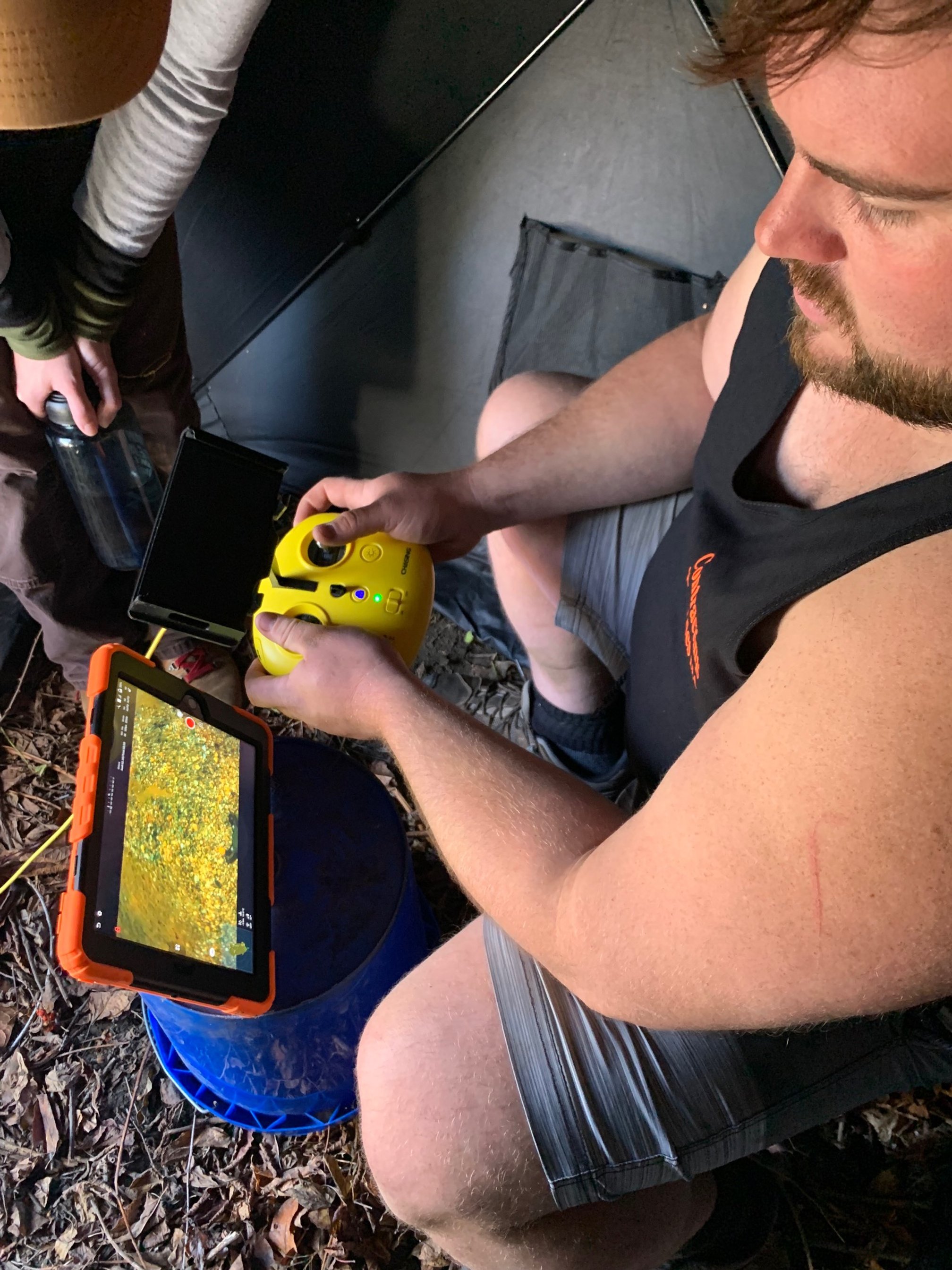
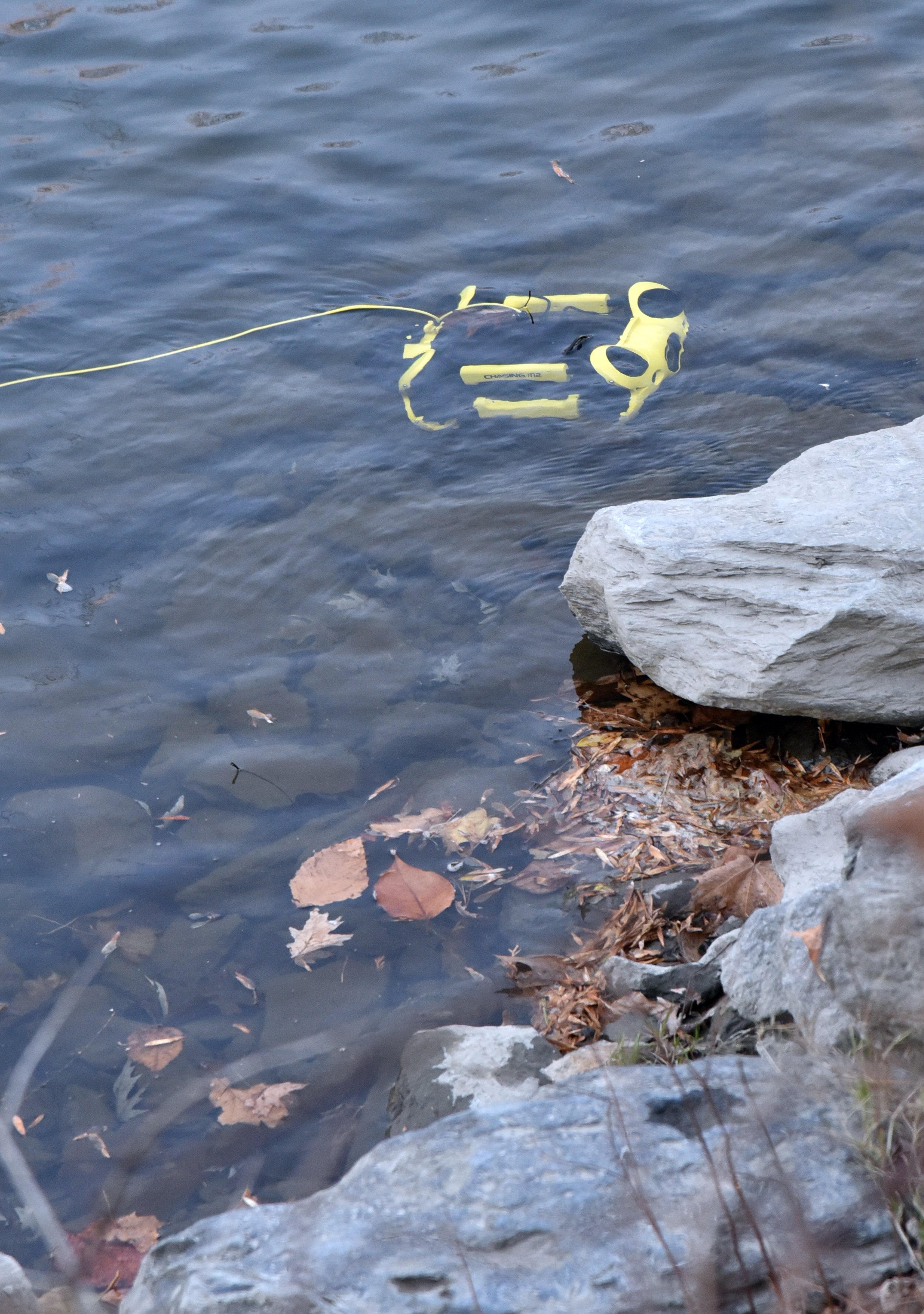
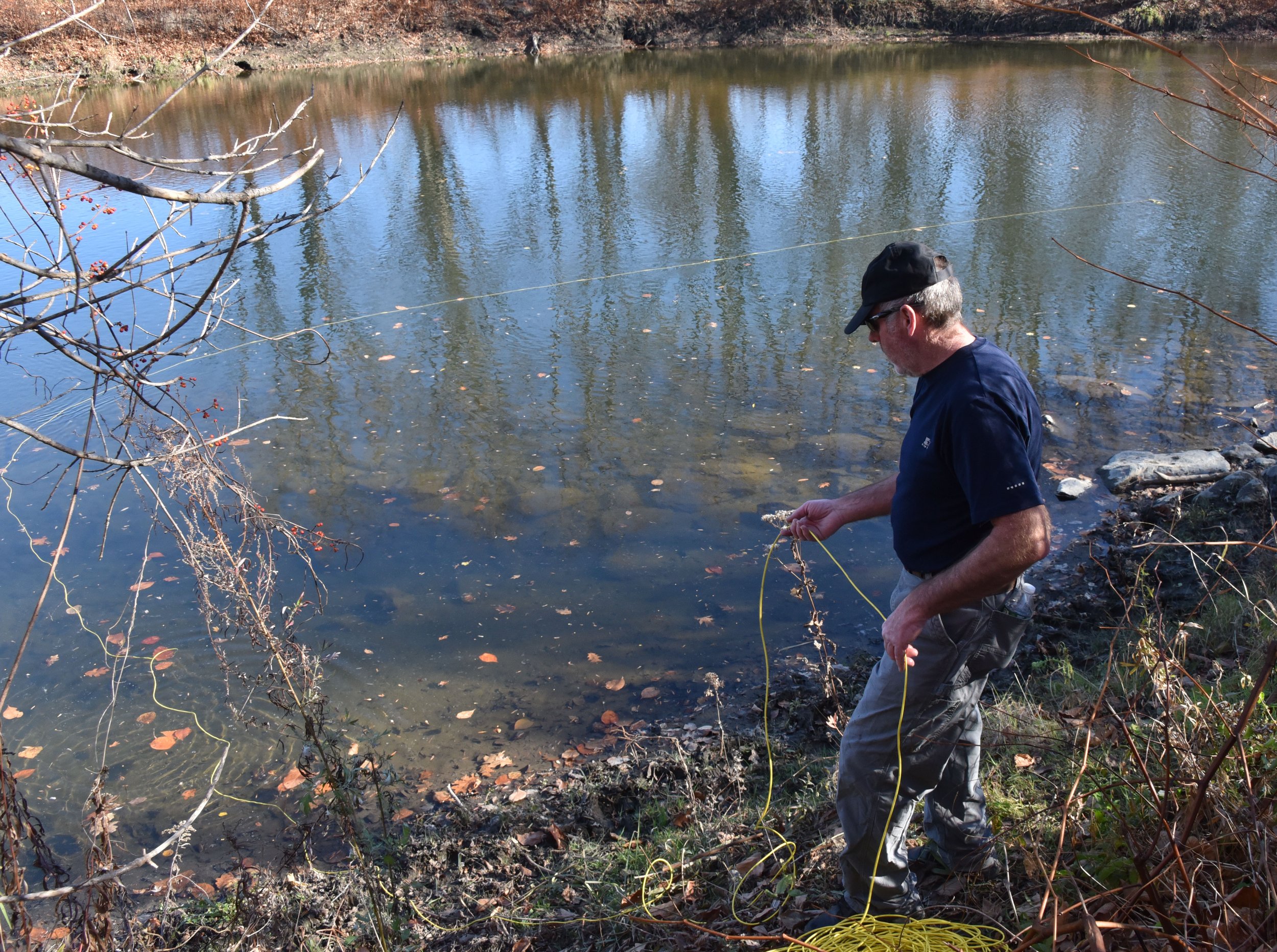
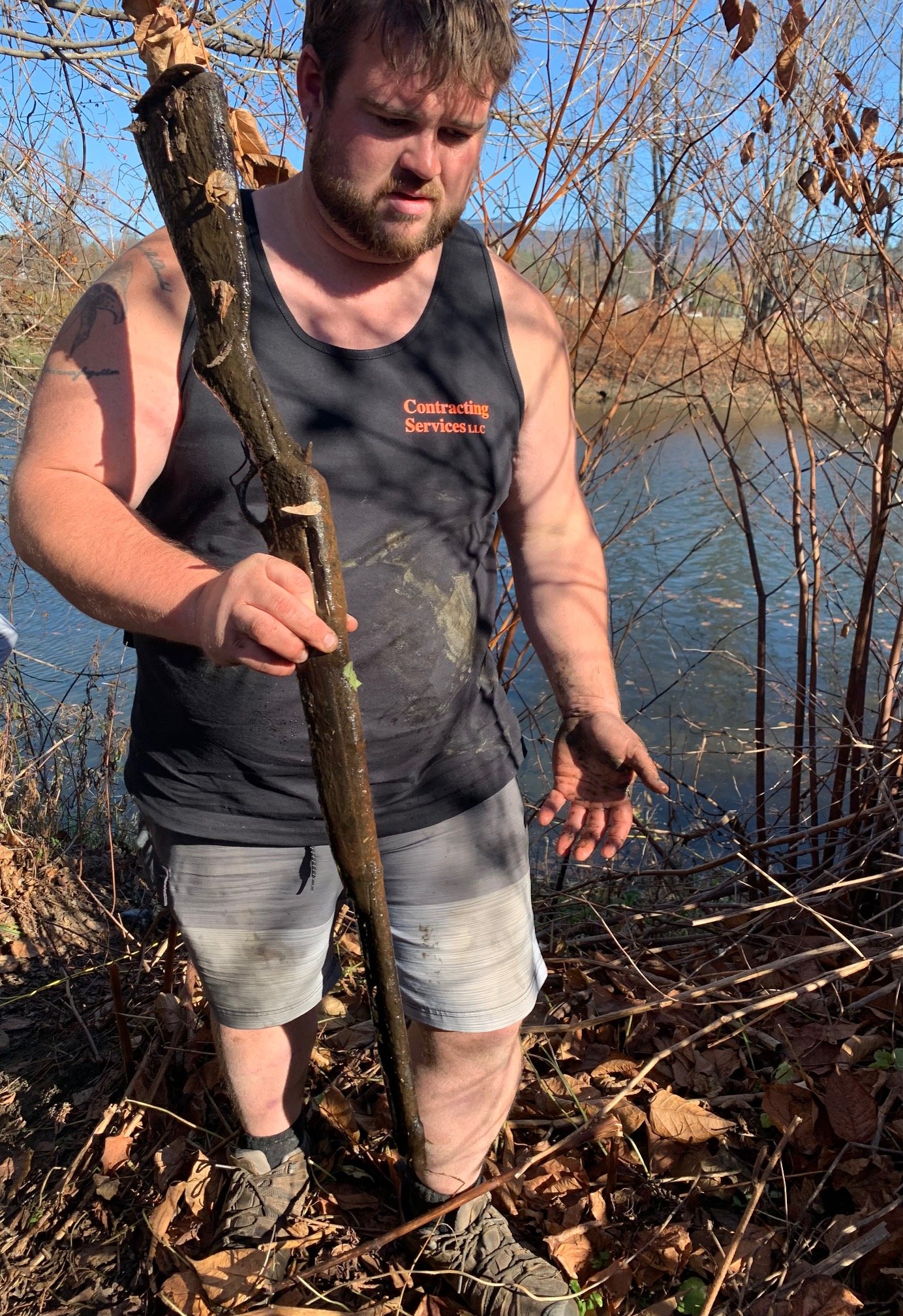
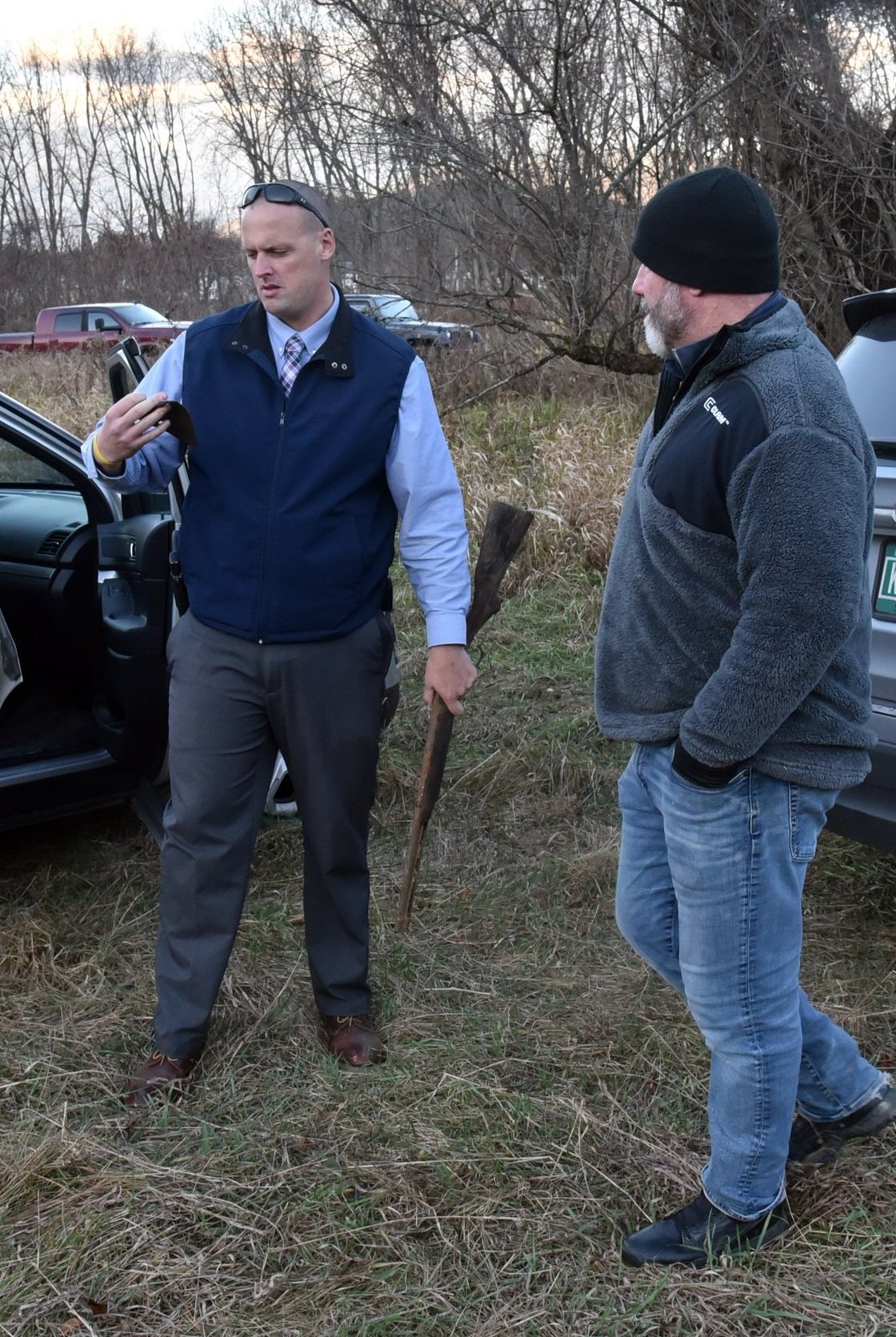
Ferris and McIntosh eyed the rifle and agreed it was likely a 30-30, guessing it was a Marlin. They promptly walked it over to the state police dive party and turned it over.
MacCallum said the firearm would be examined for a serial number to check against records. “But it might not lead you to the last person who had it,” he said, adding that investigators would talk with those close to Messier to see if they recall him having such a gun.
‘Final area search’
Both groups worked through daylight last Monday. The volunteers with the underwater drone did not report any significant additional finds.
Daley left the riverbank before the dive team finished for the day. Trooper Jon Prack was available to answer questions. He said a total of eight divers worked in the water but he could not comment on whether they recovered any objects of interest. “We did what we can today as a final area search,” Prack said, adding that it involved some digging and team members considered it thorough regarding searching for anything connected with the Messier vehicle.
At this time, the state police do not plan to return to the river to continue searching. “Our work here is done for now, unless someone has a better lead downstream,” Prack said.
Ultimately, MacCallum noted, determining whether found objects other than bones came from Messier’s truck likely won’t reveal what happened to the missing man.
McIntosh and Ferris said they are eager to hear more about the items that they gave to police over a week ago. “We’re going along with life ’til we get a ‘yea’ or a ‘nay’ from the state police,” Ferris said, most specifically if anything turns out to be human remains.
“That would be enough for closure for many,” he said. “If not … this remains an open investigation.”
McIntosh said he couldn’t say whether he would spend more time searching. But he did say he feels invested in finding a definitive answer. “It’s important to the Messier family. It’s important to your community.”



